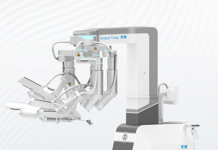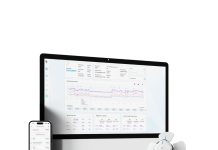Comprehensive Digital Transformation Aims to Enhance Patient Care and Drive Cumulative Savings
In a significant move to revolutionise the National Health Service (NHS) and enhance public sector productivity, the UK government, through the Public Sector Productivity Programme, has announced a groundbreaking £3.4 billion investment. This initiative is set to double the funding for NHS technological and digital transformation, leading to a range of improvements in patient care and operational efficiency.
NHS Technological and Digital Transformation
The substantial funding injection of £3.4 billion will play a pivotal role in transforming the NHS into one of the most digitally enabled and productive healthcare systems globally. Aiming to reduce the time frontline workers spend on administrative tasks and upgrade essential infrastructure, the plan anticipates unlocking £35 billion in cumulative productivity savings from 2025-26 to 2029-30.
Three Key Areas of Investment:
1. Transforming Access and Services for Patients (£430 million)
- The NHS App will become the single front door for patients, streamlining access to services and providing instant health information, saving both patient and staff time.
- Digitally-enabled prevention and early intervention services, including a new digital health check, will identify high-risk individuals early and facilitate easy access to vaccination or screening appointments.
- A radically improved online experience for patients will serve as a central digital access point for NHS service information, enhancing navigation and freeing up staff time.
2. Data Utilisation for Administrative Efficiency (£1 billion)
- The investment will focus on reducing time spent on unproductive administrative tasks by NHS staff through the use of data.
- Pilots testing Artificial Intelligence (AI) for automating back-office functions, providing digital passports for all NHS staff, and accelerating the Federated Data Platform (FDP) aim to bring operational and ICS data together, offering a 10% improvement in theatre utilisation.
3. Updating IT Systems and Reducing Doctor Workload (£2 billion)
- Investment will address fragmented and outdated IT systems, reducing 13 million hours wasted annually by doctors and enabling up to £4 billion of savings over five years.
- Upgrading over one hundred MRI scanners with AI is expected to deliver results up to 35% more quickly, benefitting 130,000 patients annually.
- The NHS will end its reliance on physical paper records by ensuring all NHS Trusts have Electronic Patient Records by March 2026.
Key Metrics and Incentives
The NHS aims for a 1.9% average productivity growth from 2025-26 to 2029-30, rising to 2% in the final two years. The strategic plan is aligned with the Long Term Workforce Plan’s ambition, enabling £35 billion in cumulative savings by 2029-30.
An external expert advisory panel will oversee the programme, ensuring support and challenge for its goals. The introduction of new productivity metrics, starting in the second half of 2024-25, will enable quicker policy adaptation. Incentives will reward providers at a local level for productivity improvement, with further details to be outlined in the summer.
Maternity Safety Investment
The government and NHS England are allocating £35 million over three years to enhance maternity safety, including the Avoiding Brain Injuries in Childbirth programme, increased midwife training, and the creation of Maternity and Neonatal Voice Partnerships to improve women’s experiences and care.
Conclusion
The ambitious £3.4 billion NHS Productivity Plan signals a bold step toward a digitally advanced and more efficient healthcare system. With a focus on patient-centric technology, administrative streamlining, and data-driven improvements, the government’s investment is poised to elevate the NHS’s standing as a global leader in healthcare provision.






